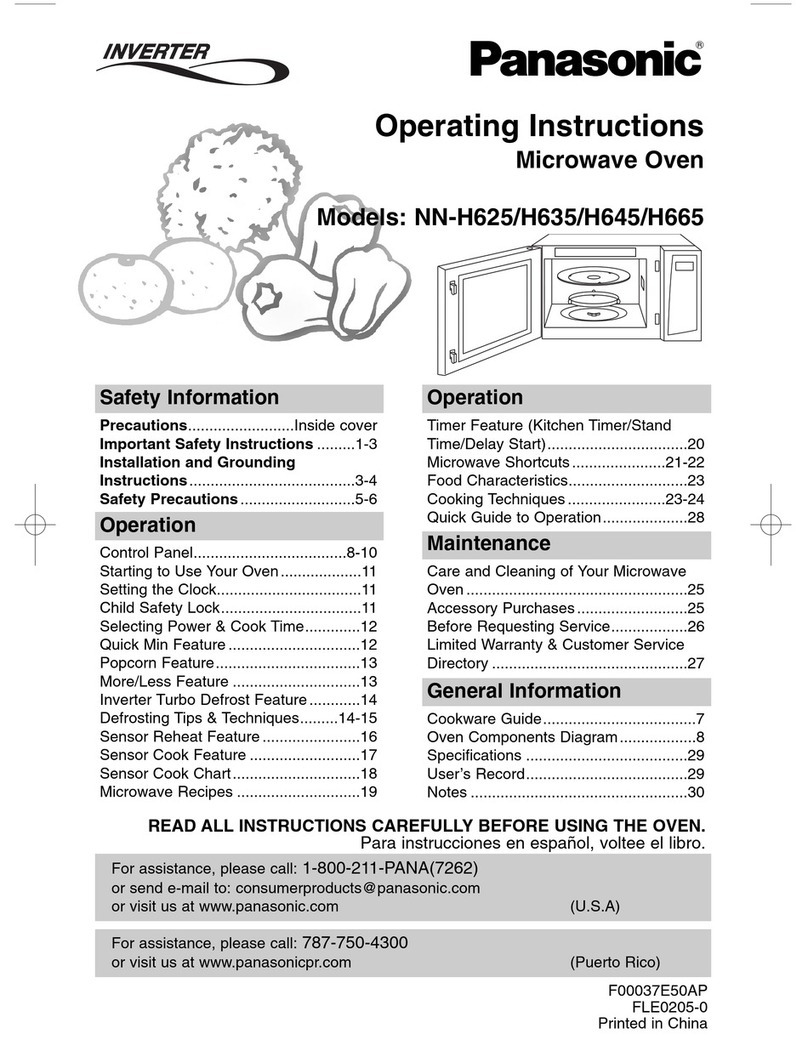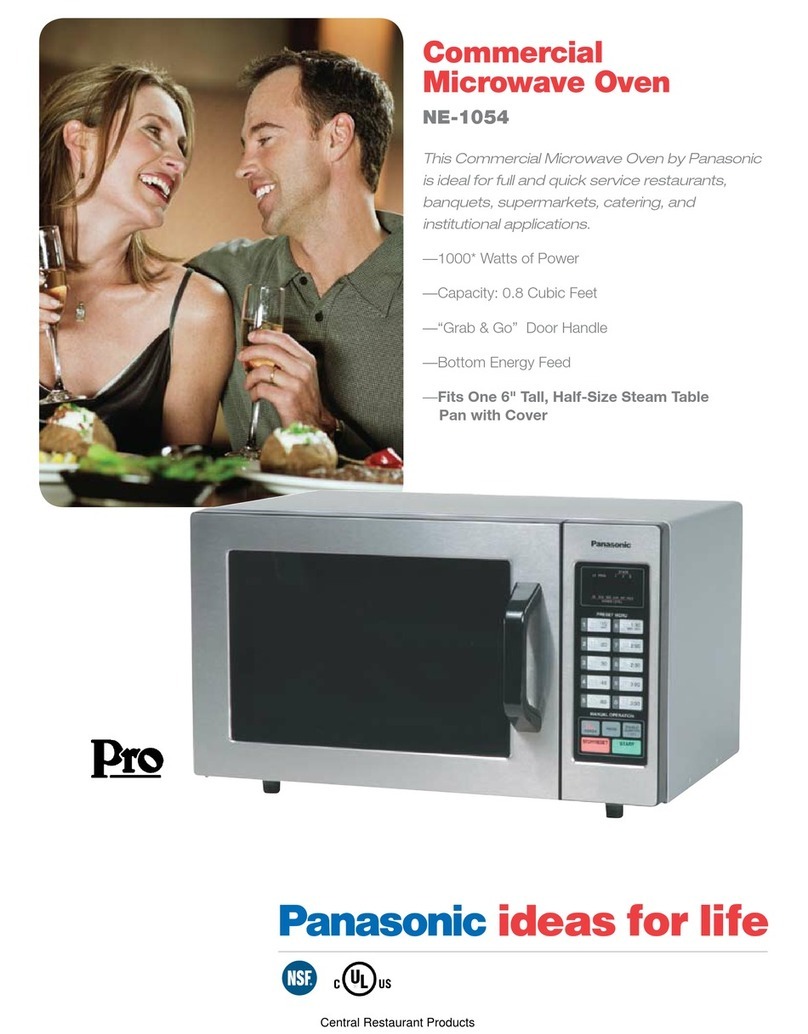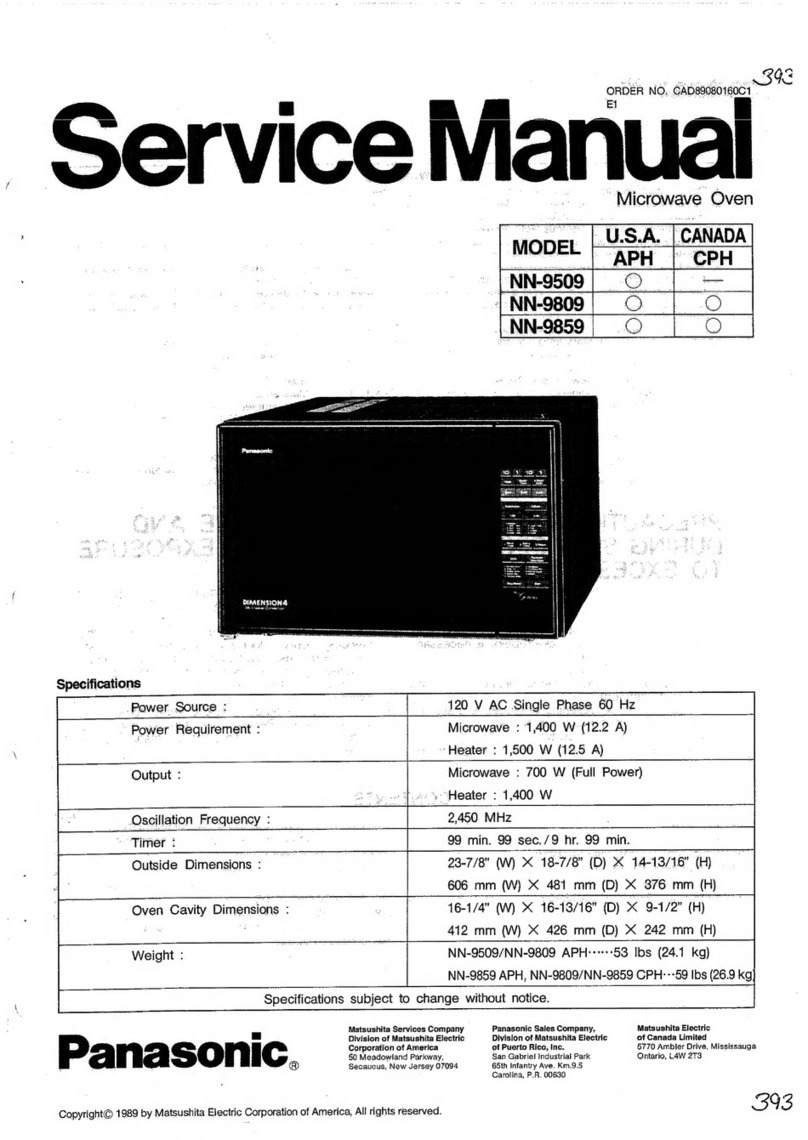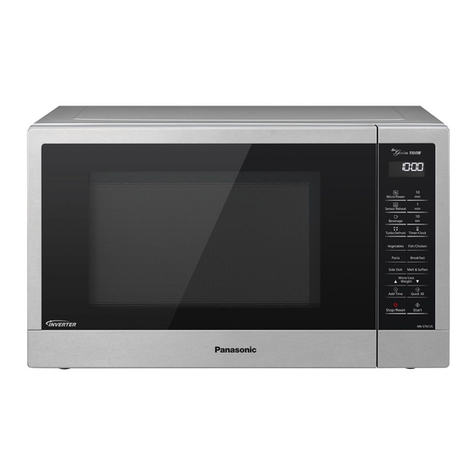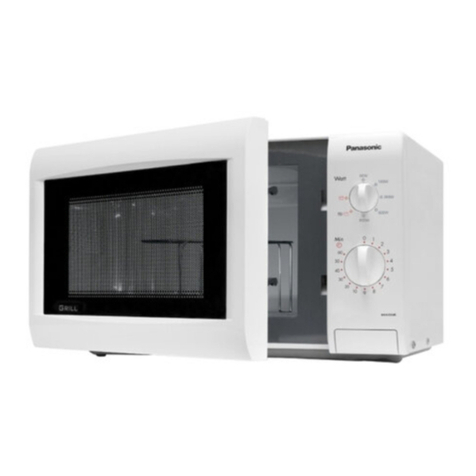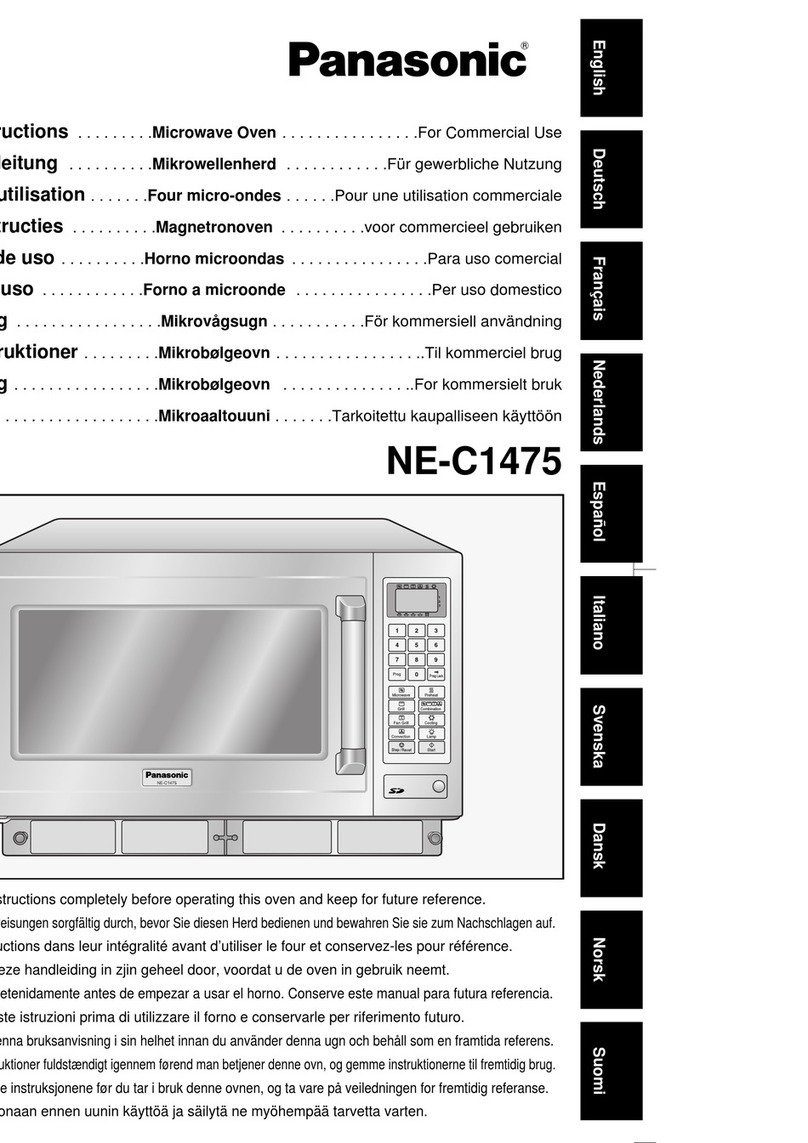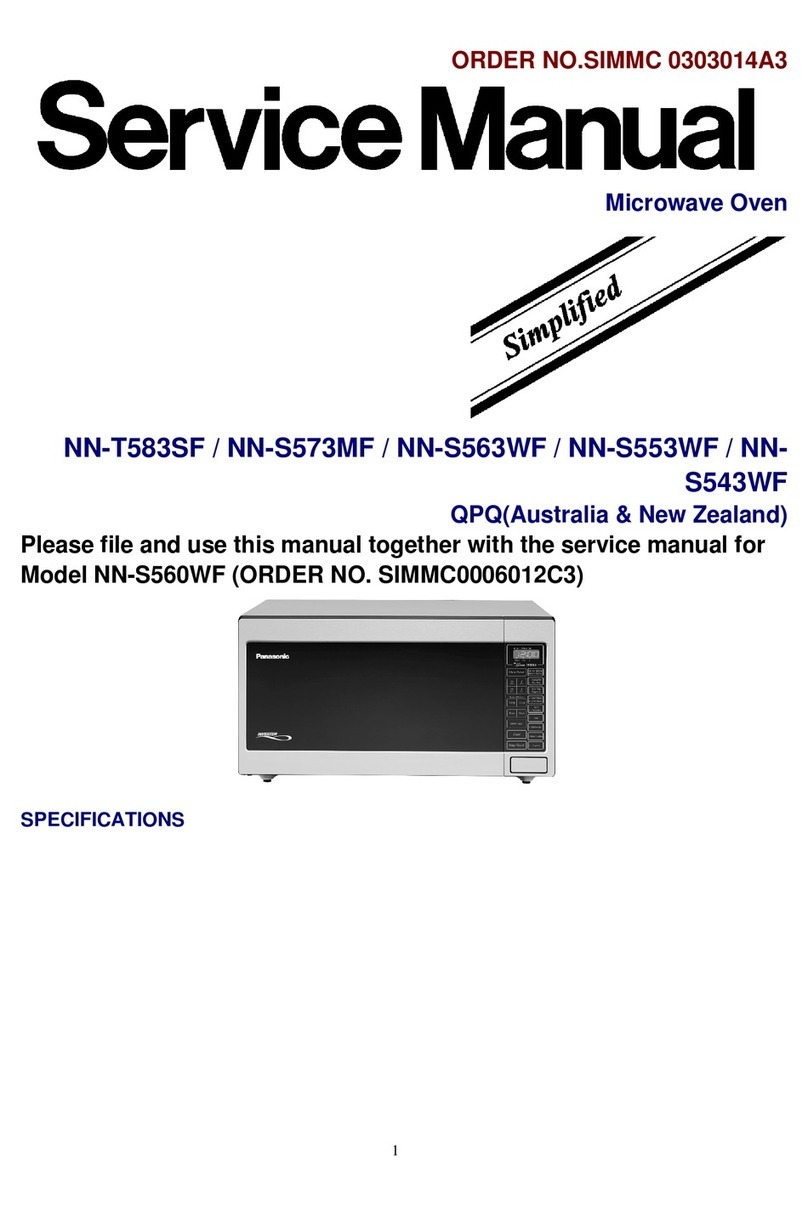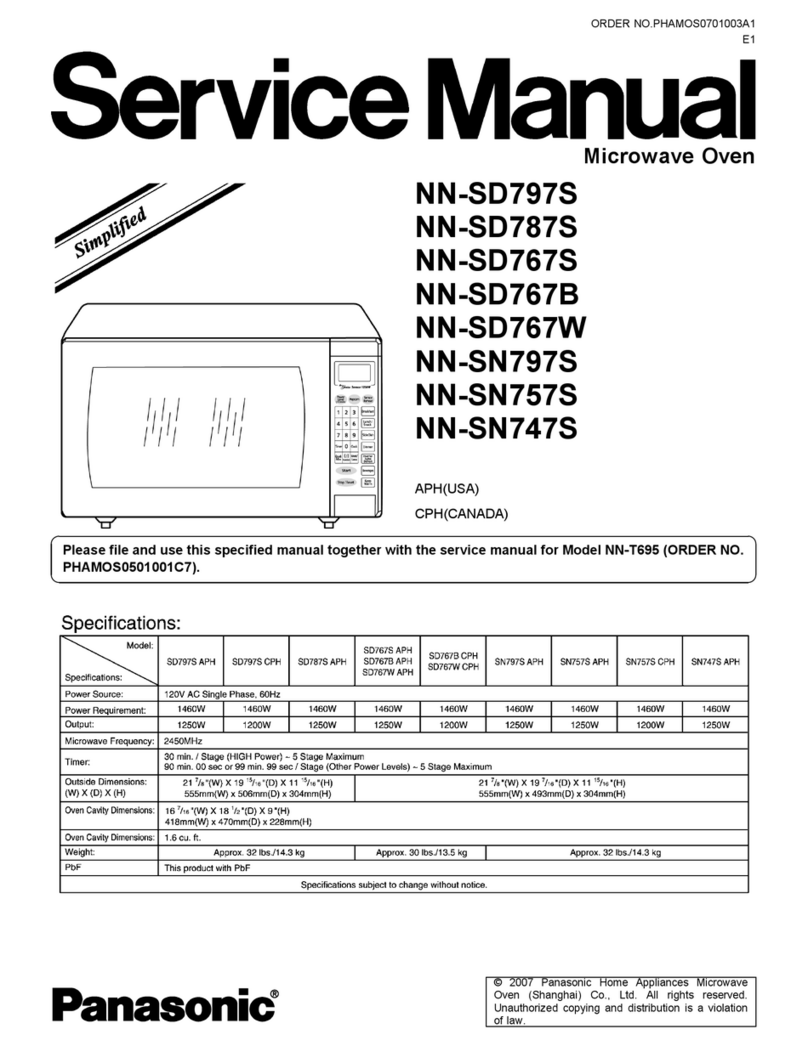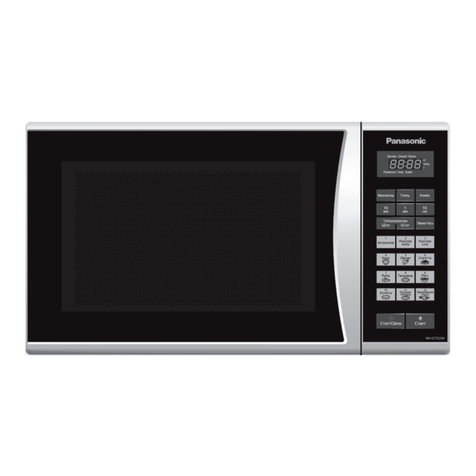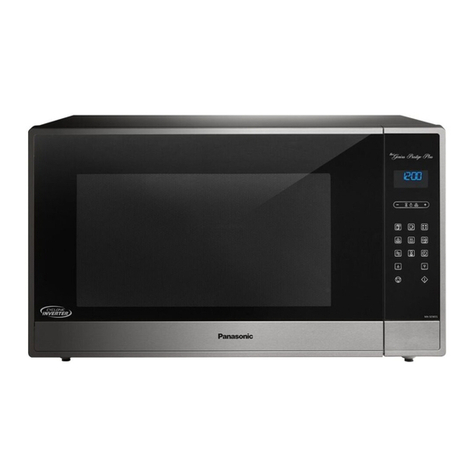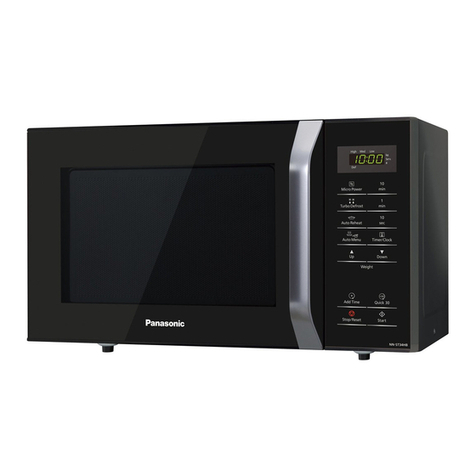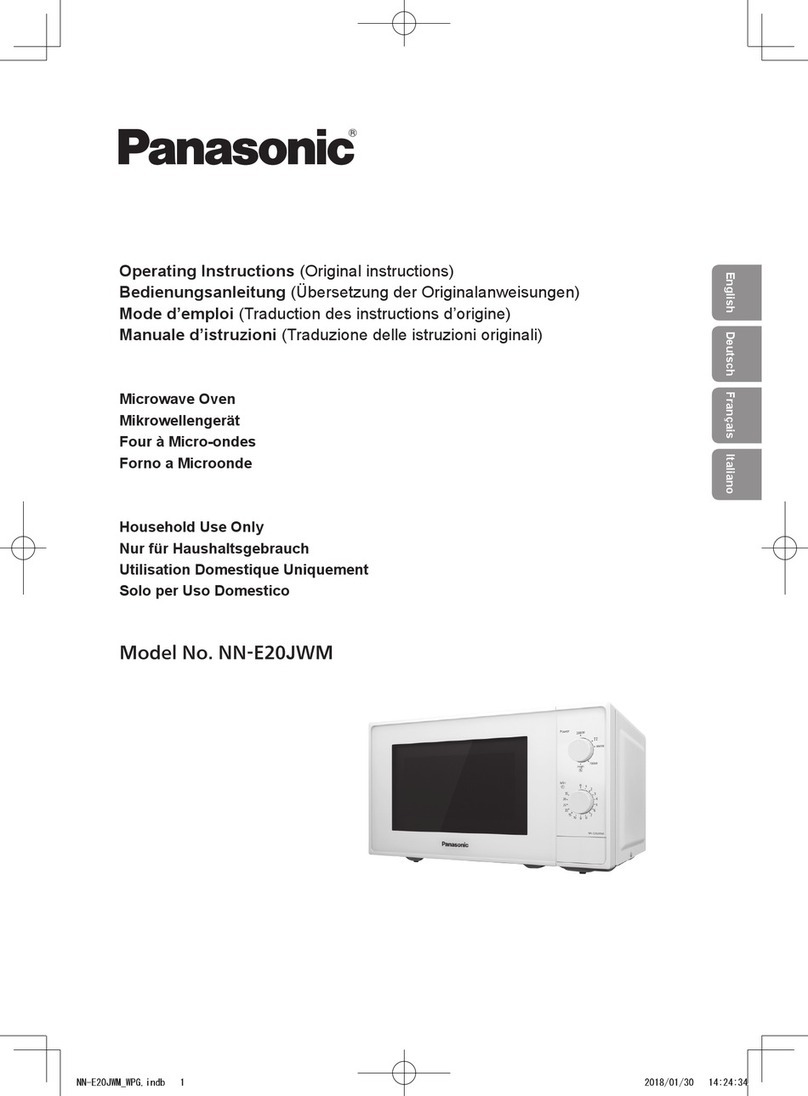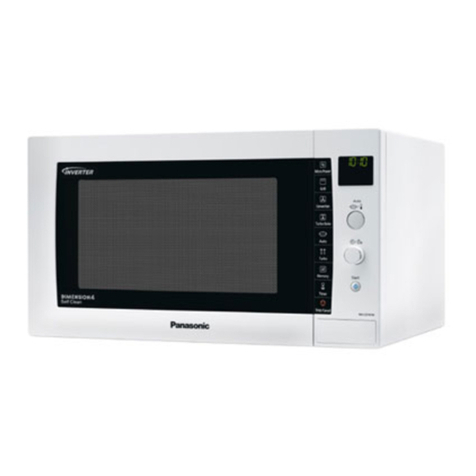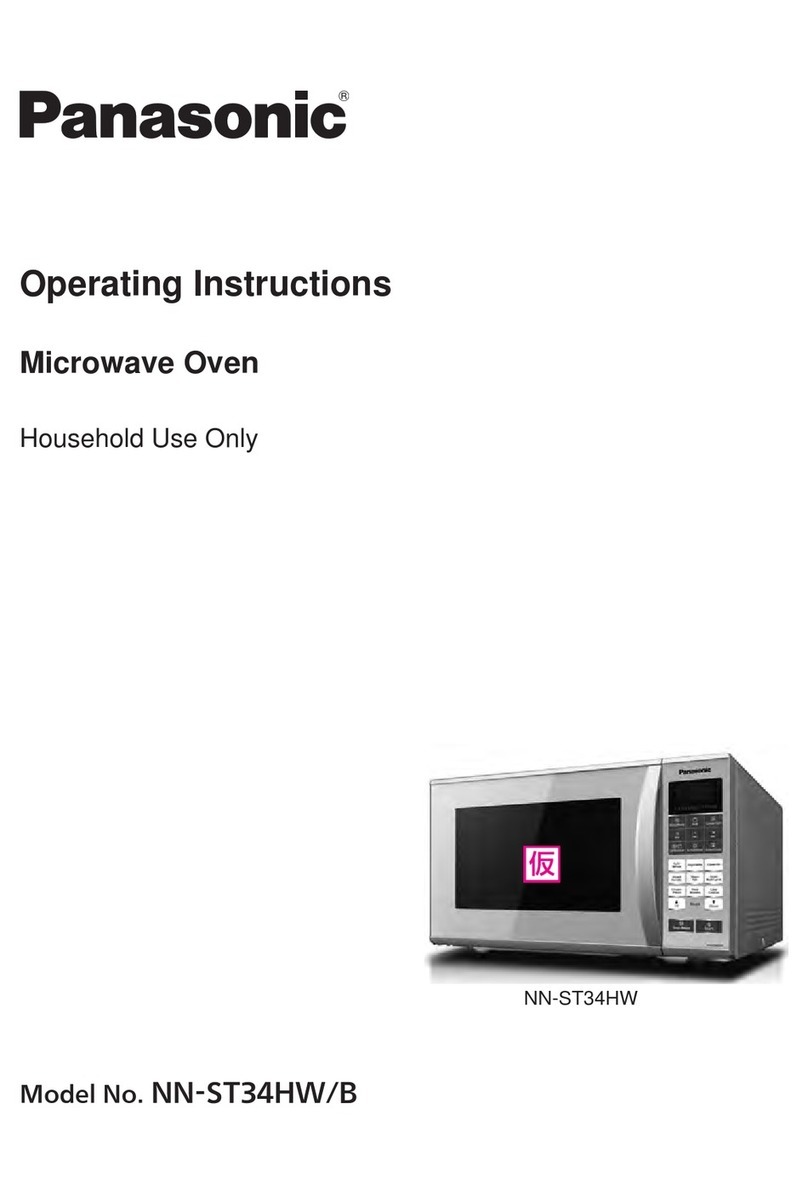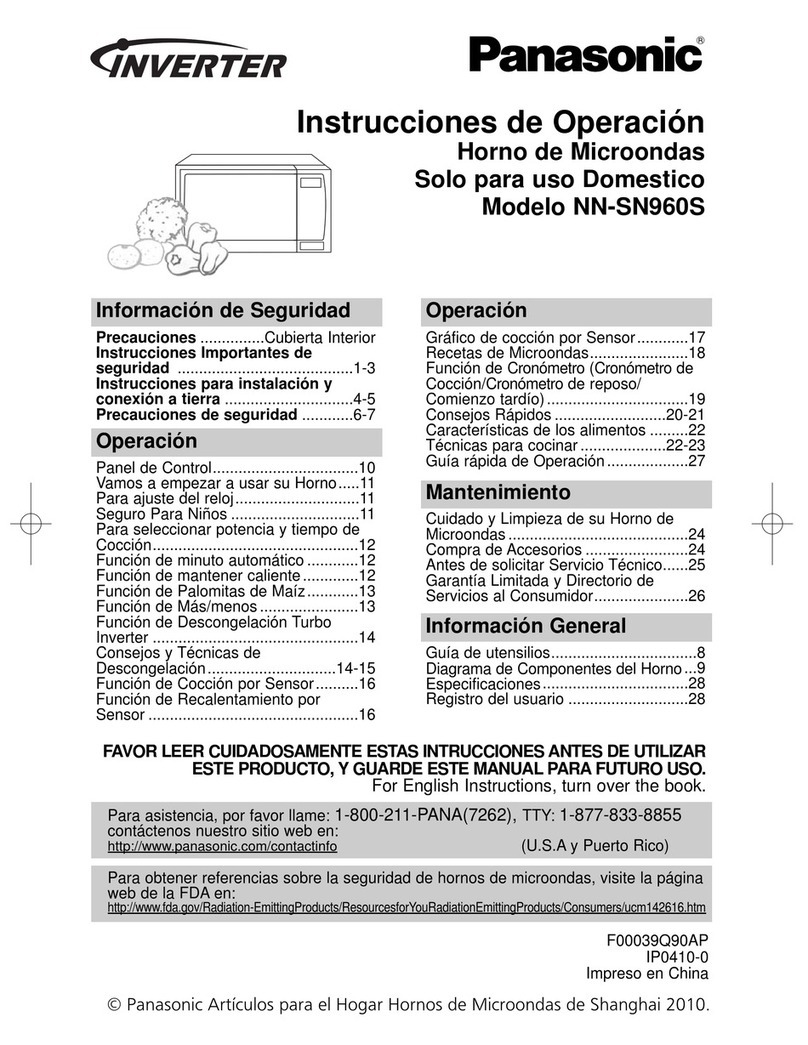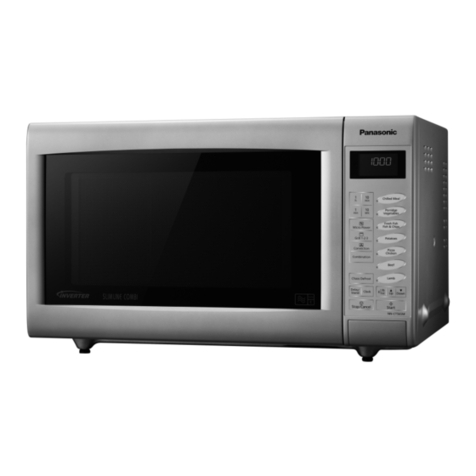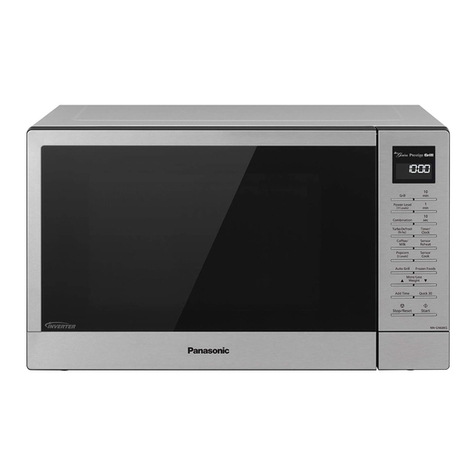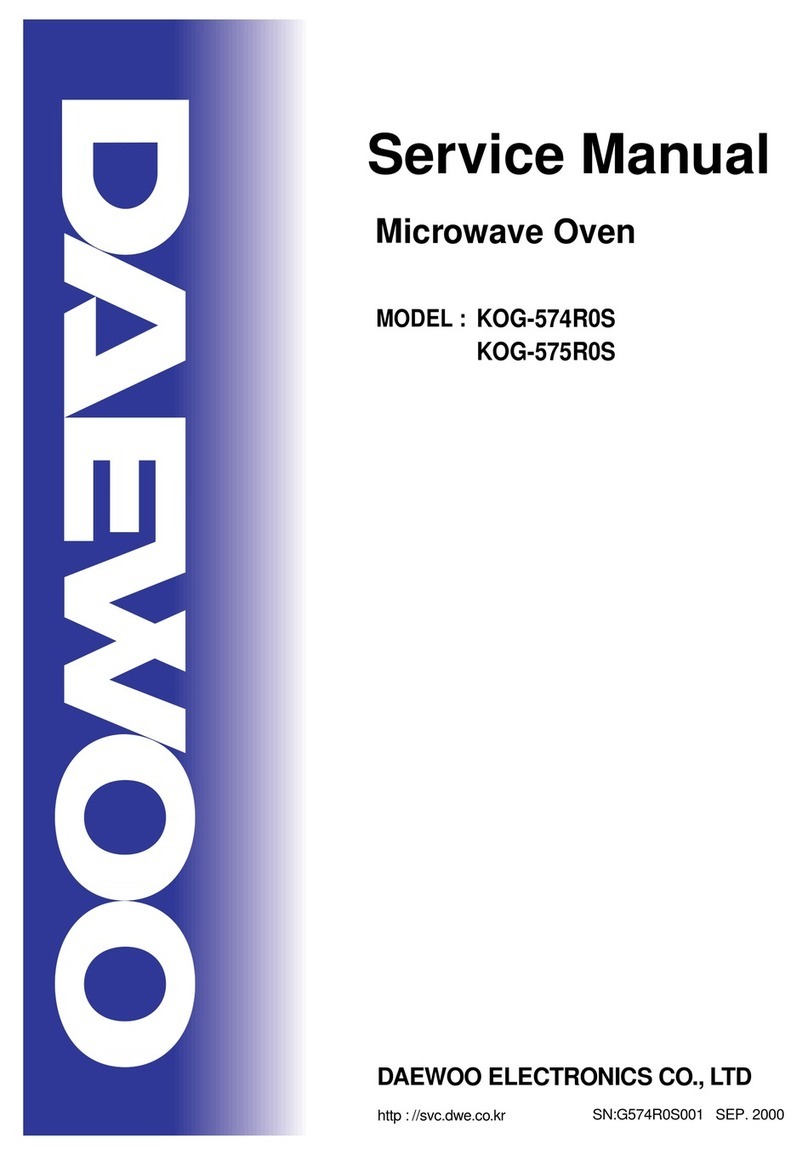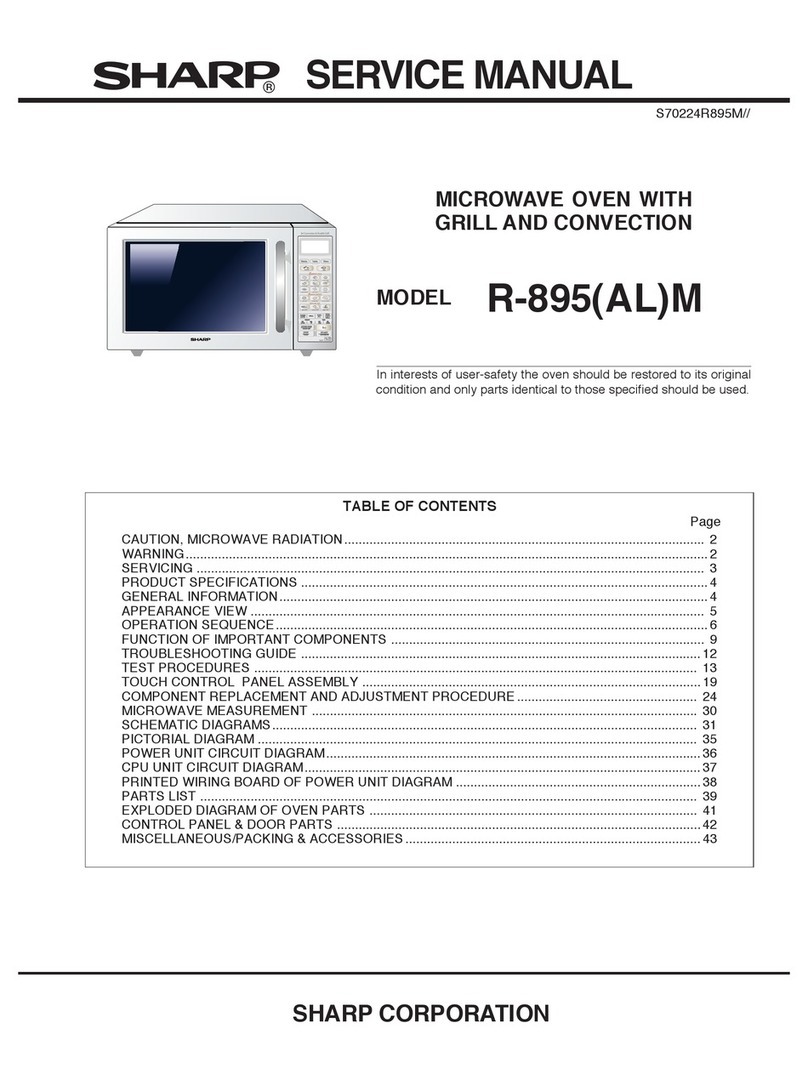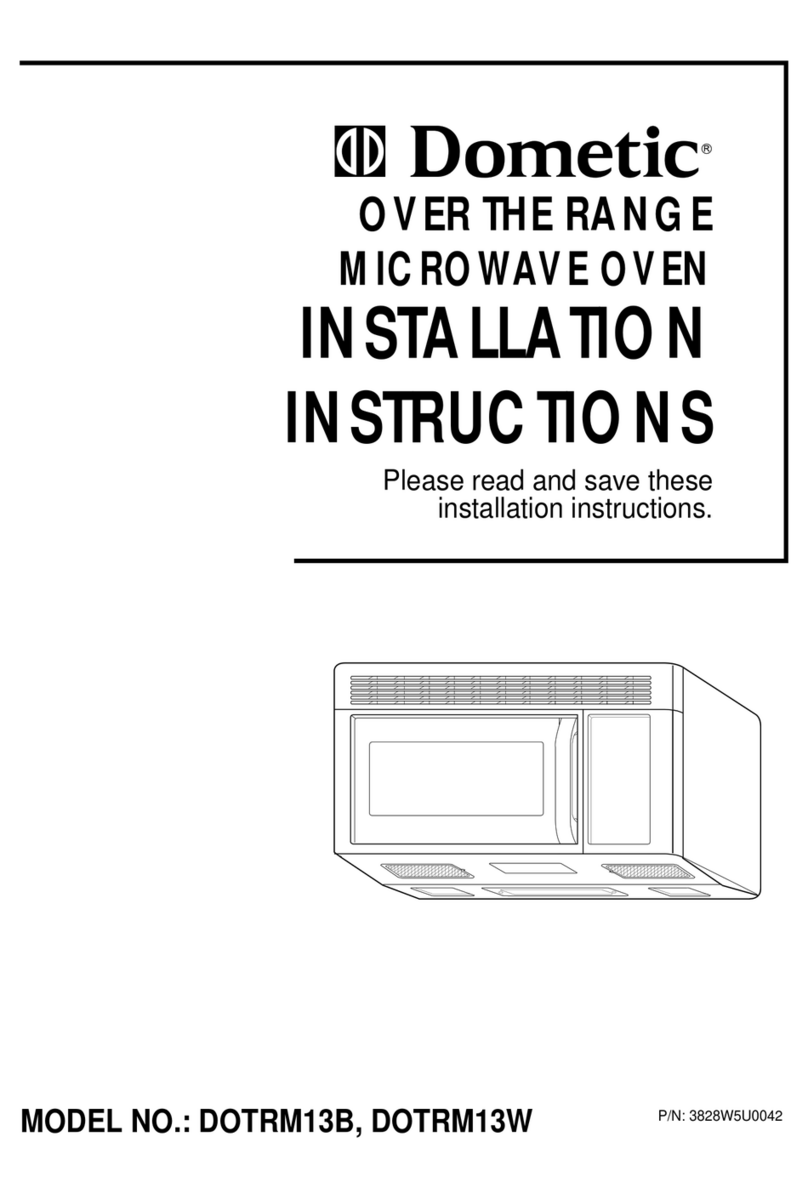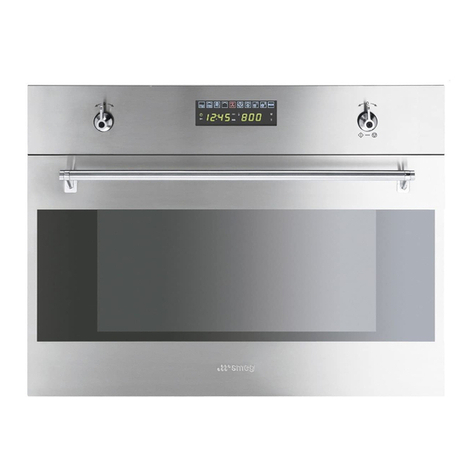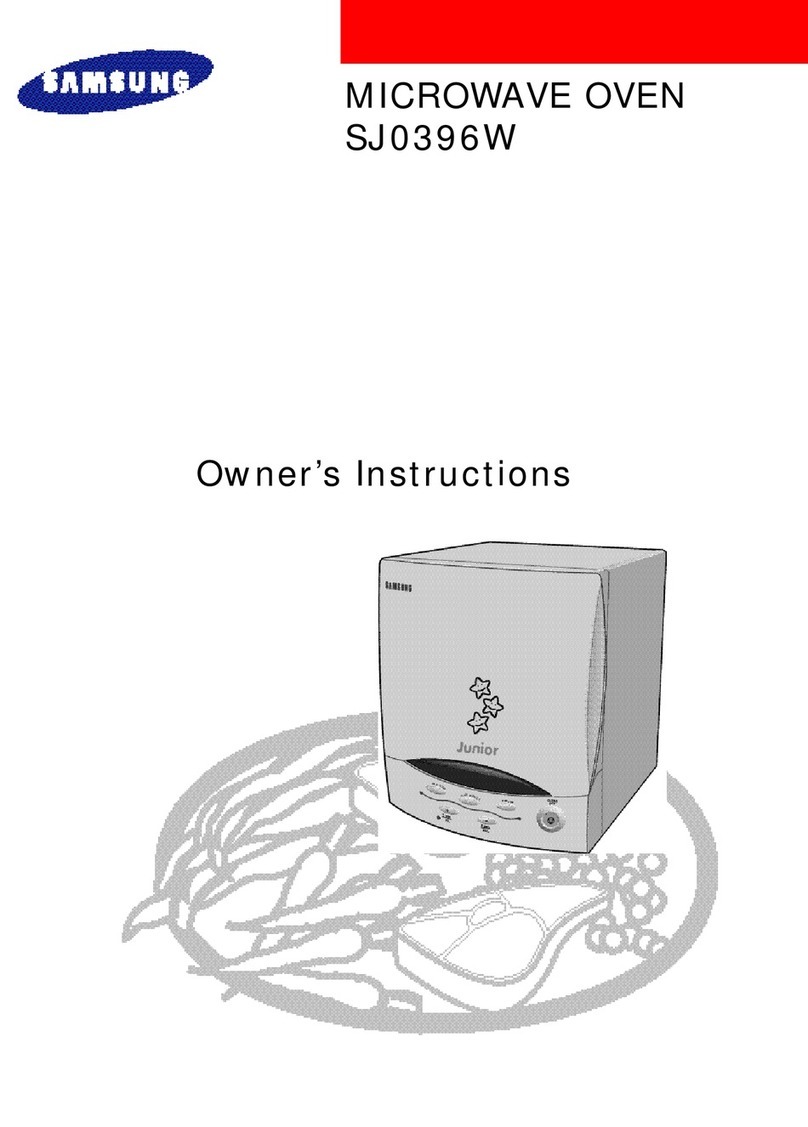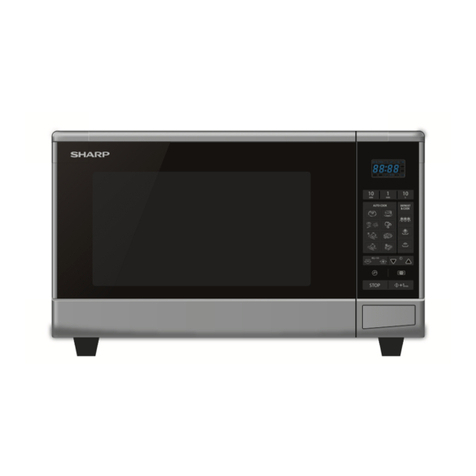
WARNING
*
This
product
should
be
serviced
only
by
trained,
qualified
personnel.
As
for
the
oven
lamp,
it
is
replaceable
by
the
users.
*
This
service
manual
covers
products
for
following
markets.
When
troubleshooting
or
replacing
parts,
please
refer
to
the
country
identifications
shown
below
for
your
applic-
able
product
specification.
For
United
Kingdom
For
NAAFI
CONTENTS
OUTLINE DIAGRAM
&
CONTROL
PANEL
NE-992/NE-993
FX
oy
0)
350)
5)
|
ERE
EEEEE
ESSE
ORES
SSSSSSEEOOOSOOOOOOOOOOOOCOOOOEOOOORSOOOOOOOOCOOOSOOOOOOOOOOOOOOOCOO
SSCS
SSOSEOOSSEOOOOOOOOOOOOOOOOOOOOOOOOOOOSSEOOSOOSOS
7
SCHEMATIC
DIAGRAM
IN
=o
9]
ko
EERE
OSES
SSS
OOSSSSOOCOSSEOEOSOOOOOO
OOOO
OOSEOOOSECOOOSOOOOOSOOSSOCOOOSOOOOOOOOOOOOOOOOOSOOOOOOLOOOOOOOOOOOOOOOOOOOOOOOOOOS
8
INT
=n)
fe
OEEES
EEE
EECES
ESOS
OOOO
OSOSOOSEOOSOOOOOOOOOOOOOOOOOOOOOOOOCOOSOOOOOOSOOOEOOOOOSOOOOOOSOOOSOCOOOOOOOOCOOOOOOOOOOOSSSOOOOOOOOOCOOOOOOOOOOSOOOCOOOOOOSS
9
DESCRIPTION
OF
OPERATING
SEQUENCE
sssssesreerserretesteseeseseeeeeeenteeneeeteeceeteeteeneesseeneesnreseseneesneeeeseseneeseccseaaeecnseenseseneenn
stieeee
10
AUTO
SENSOR
EXPLANATION,
K
FACTORS
AND
POWER
LEVELS:
er
rrceccrecrecetcret
ess
nee eet
eeetee
eee
te
cect
ee
cease
eens
ene ane
nena
naeeenraeceeen
ernie
seen
ets
17
CAUTIONS
TO
BE
OBSERVED
WHEN
TROUBLESHOOTING:
:::-----
Jagdine
Seahees
WgdesvaaUaduetcdea
wed
decease
dovae
det
asses
vatea
sedans
coedeue
evensersgseeer
vane
Seobesgs
18
DISASSEMBLY
AND
PARTS
REPLACEMENT
PROCEDURE:
::11rr:cstseeertseerereetetteeeeenteeeectnseeeereeeertseeeeen
nines
esennenegaaeeesrnnneeerenernens
sannnnes
19
COMPONENT
TEST
PROCEDURE
<vrreeeesrececrteeseeeseesereeeceeeeeeeaeeeeeeneeeseneneeeerseeeesnseeeenisaeessseeteesesceseseeanerecereneeeeeeesenenreeeeesnn
ceeees
23
MEASUREMENTS
AND
ADJUSTMENTS
‘crccerescccteersseesesteteseeeeeeeenessseeennneesenseeeesssseeserseeeeenseesensasasesensteeeersaneeecaeeeensneeecererteis
cenernes
25
TROUBLESHOOTING
GUIDEs
+s
ceesccestresteereeerseeeseetseeseeeneeneeeneens
teen
senna
ee
teens
eeneeen
eee
eeeeenee
sete
ee
ene
ee
eee
teeeeeeeneecneaeeeeeeeneesneeeteeeie
oeetse
26
DIGITAL
PROGRAMMER
CIRCUIT
TEST
PROCEDURE
NE-992/NE-QO3-+coecccceereeeeseeteseeesseceesseecsseeeseeeeessenseseneeeeessseessseeeneeeenieeestecenseeeseeensseeeneeeeessaeeesaeesaeeessaeeeeecaesesennegenseneese
#aeeeees
33
Nn
dE
EEEEESEELEESOOEESSOEESOSORSOOOSOSOOSOOOOSEOOSSOOOIOOOOOOOESOOOOOOOOCOOOSOOOOICOSOOOOOOOOOOOOOOOOOSCOOSOOOOOOSOOOOSO
SOOT
SS
CCCOCOOOOOOOCOOOCOOOOESOOOOS
44
EXPLODED
VIEW
AND
PARTS
LIST
<coccccesceerseceeesesseseeeeseeense
senses
eenneesenee
settee
enneeeteeenteeeneeetieetnsaeerseeseeeerineernaeeee
sees
sensneeesennenniy
earns
50

